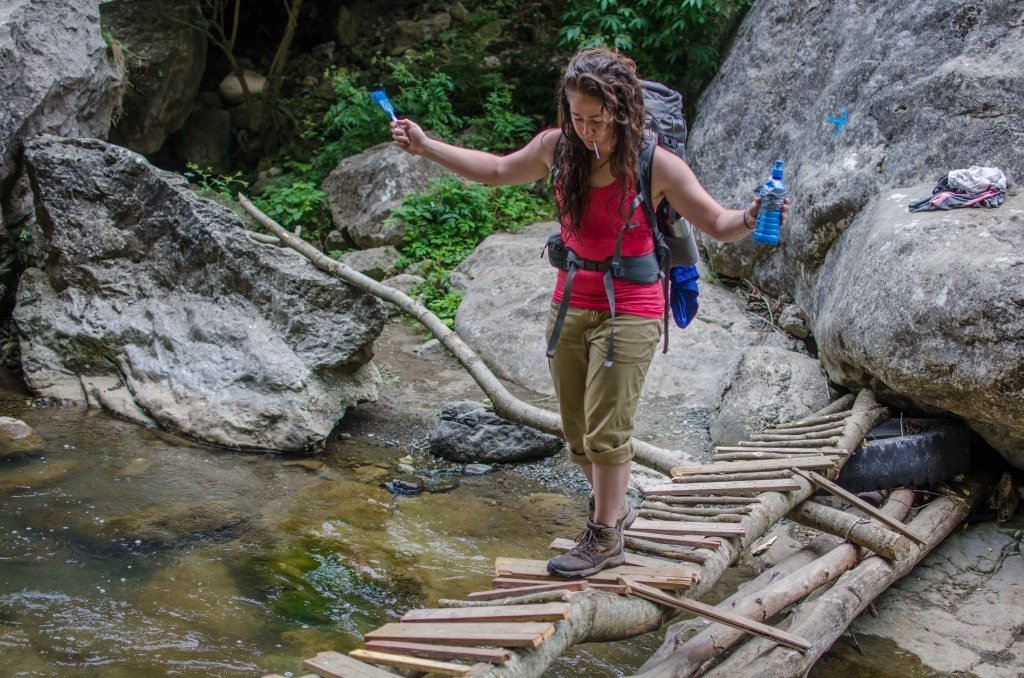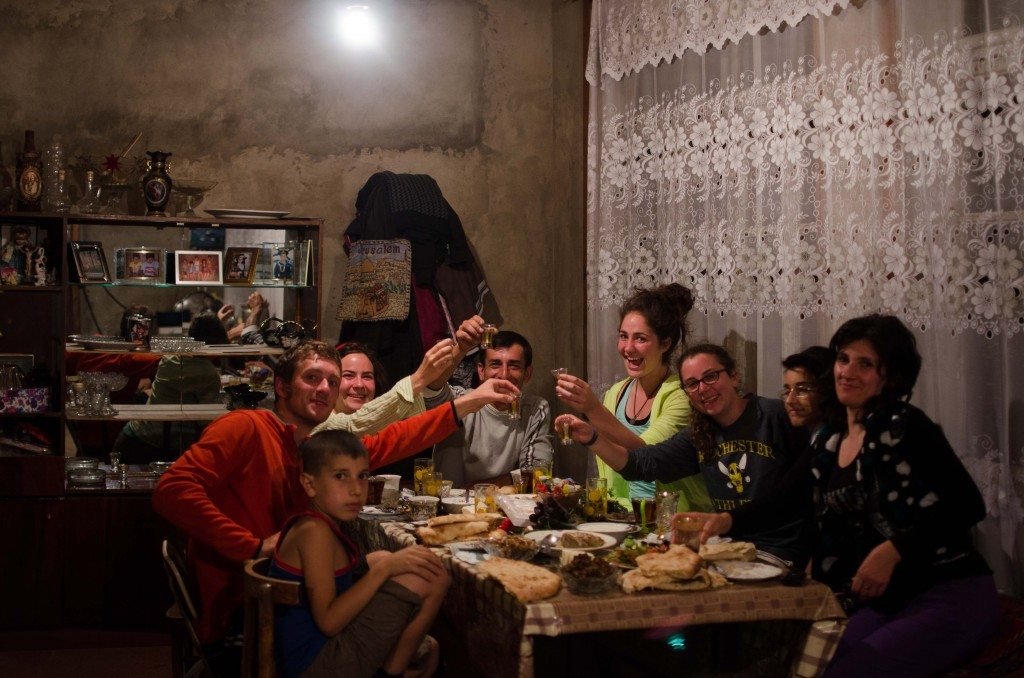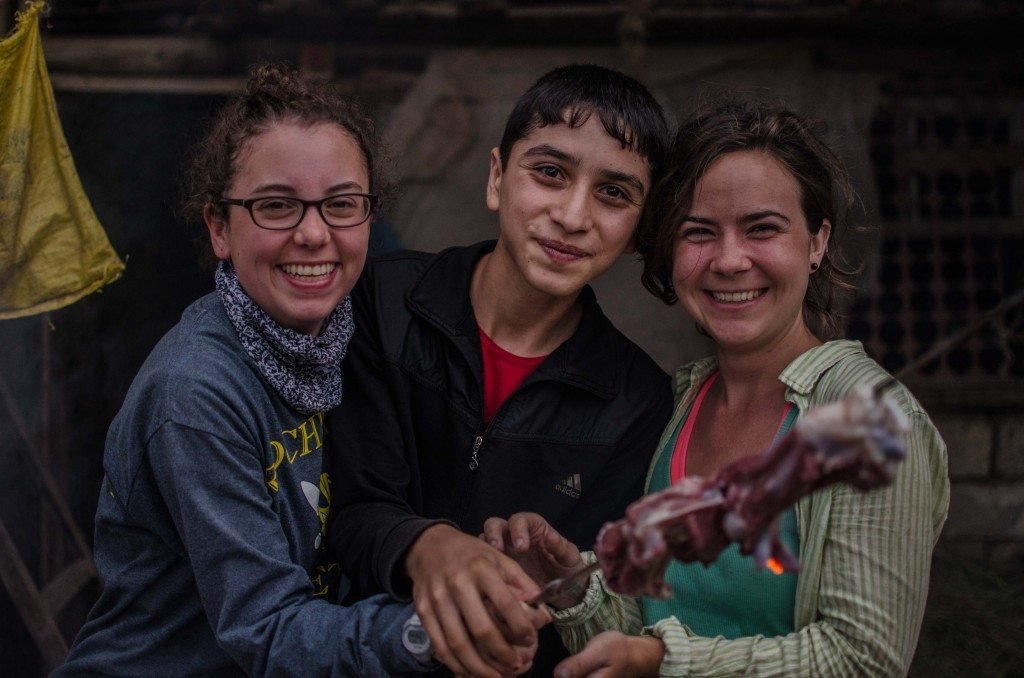“You’re Armenian?”
“Yup, we’re all Armenian!”
“Why didn’t you say so?! What would you like? More food, coffee, tea? You’re leaving tomorrow? Why don’t you stay…”
The “Armenian connection” conversation. It was a daily occurrence. Sometimes we even had it three or four times a day along the Janapar Trail, and it was a staple of evening conversations with our host families. We quickly learned how this conversation went. The explanations about our family heritage became automatic. Our settings would turn to autopilot and we knew they’d ask next to hear our Armenian surnames. The four of us each took our turn, but at this point we had heard each other’s answers so often we could have reported for everyone.

Despite the frequency of the conversation, we never quite got used to how it ended. It was surprising and overwhelming—an offering of more food, a renewed enthusiasm for having met us, and a mutual acknowledgment that despite our apparent differences, underneath it all there was something that connected us.
The Janapar Trail is a nearly 300-km. (186-mile) hiking route that weaves through the mountains of Nagorno-Karabagh (Artsakh) from Hadrut all the way to Vardenis. Marked for the first time in 2007, the trail brings visitors to many of Artsakh’s natural and historical landmarks, including the alluring monasteries of Gtichavank, Dadivank, and Gandzasar, the otherworldly Zontik waterfall, and the magnificent 2,000-year-old tree at Skhtorashen. Broken into 16 sections, each day on the Janapar Trail begins and ends in a different village, allowing hikers the opportunity to spend each night with a local family and experience Artsakh through the eyes of its people.
As a volunteer with Birthright Armenia, I hiked the trail this July with three fellow volunteers from Birthright and Armenian Volunteer Corps. With blue paint in hand, we improved markings along the trail from Hadrut to Kolatak. The natural beauty of Artsakh is an invaluable resource for the development of the region’s budding tourism industry. But what we discovered along the trail is that the Janapar offers something totally unique to other hiking destinations: Nowhere else have I experienced such warmth and generosity from strangers as we did during our time on the Janapar Trail.

If you took one look at our dirty, sweaty bodies covered in blue paint, you would have wanted us as far from your home as possible. But not on the Janapar Trail. Families took us in and showed us kindness, love, and hospitality. And when we made the “Armenian connection,” the generosity flowed as fast as the oghi. After a long day of hiking, we stuffed our bellies with fresh vegetables from the families’ gardens. We laughed and joked around the dinner table as if we had known each other forever. Every morning, we exchanged hugs and e-mail addresses, and forced each family to accept our small payment, which never matched their generosity. And we hit the trail with reluctance, looking back over our shoulders at the smiling faces of our hosts, who we might not ever see again. But at the same time we marched confidently on, knowing that we had a new place to call home.

To learn more about the Janapar Trail and to start planning your own hiking adventure through Nagorno-Karabagh, visit www.janapar.org.


Question:
How difficult would this trail be for older adult in good health?
Hi Howard,
If you’re used to walking or hiking a day’s distance I’d say definitely consider doing the Janapar. The great thing about staying with homestays is that you don’t have to deal with the weight of a tent and equipment. From Hadrut to Stepanakert each leg averages about 15 km, a long day’s hike, but definitely manageable. And everything from Hadrut to Stepanakert is on some sort of established footpath or road which means you won’t have to negotiate over large boulders, etc. If you haven’t already, definitely check out the Janapar website: http://www.janapar.org or the Facebook page: https://www.facebook.com/janapar.trail for more info!
Hi Ali!
Sounds like an amazing experience!
I would love to do this trail!
I’d like to ask your advice as I have looked around but can’t find to much info!
Do you know more about what visas are needed or what time of year would be best to go?
Also do you have to plan ahead and inform the families that you are travelling through there or can you just pitch up outside their front door?
Thank you so much!
Margee
Hi Margee,
I just noticed your response here, I’m sorry for not seeing it before! I’d say mid May to October is best. We went in mid July and had great weather. Many cool, overcast days that were just perfect for hiking. Because you’re up in the mountains, it’s typically much cooler than it would be elsewhere in the region. Early spring you might face some challenges due to impacts of the spring rains.
You will need a visa for Nagorno-Karabakh. You can get a visa in Yerevan at the NKR office, or you can choose to purchase the visa in Stepanakert after you’ve entered NKR.
http://www.nkrusa.org/nkr_office/visa_travel.shtml
The Janapar website has some great information about the homestays including names of families and contact info. You can call families a few days in advance if you’d like (most families only speak Armenian and Russian), but you’ll also be totally fine just showing up! People are used to hikers coming through and are kind and welcoming.
http://www.janapar.org/wiki/Villages (list of villages with contact info)
If you have other questions don’t hesitate to post them to the Janapar Facebook page (https://www.facebook.com/janapar.trail). They’re typically very good at getting back to any questions, comments, or messages!
Great story! We’ll try to hike the Janapar trail this summer.
Hello,
I am an Armenian Ultra Marathoner and I would like to run an endurance challenge (100 or 150 mile run) in Armenia trails to bring some hype and excitement to the trails for tourism benefiting Armenia. Please put me in touch with the correct individuals who can use me for this purpose. I live in Los Angeles. My email is eralto@aol.com. Thank you
Hi Ali,
I just returned from Santiago Spain after doing 800km trail of the Camino De Santiago. I am already thinking of my next trail, Janapar has been on my list for a while now. Given the recent border conflicts with Azerbaijan, would you do anything different, if you had to do the trail now?